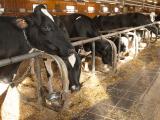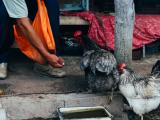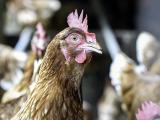Sep 17, 2007 (CIDRAP News) – Close to 10,000 ducks died recently of H5N1 avian influenza in a village in southern China not far from Hong Kong, and a local official said the ducks had been vaccinated against the virus, according to news reports.
In China's first H5N1 outbreak since May, 9,830 ducks died of the disease and another 22,800 were destroyed to keep it from spreading, according to a report that Chinese officials filed with the World Organization for Animal Health (OIE) Sep 15. The outbreak began Sep 5.
The disease struck in a village near Guangzhou, capital of Guangdong province, not far from the border with Hong Kong, according to an Agence France-Presse (AFP) report published today. The story said Hong Kong news media had reported that 100,000 additional ducks were culled by local officials today to contain the disease.
Yu Yedong, director of the Guangdong Animal Epidemic Prevention Centre, said the ducks had been vaccinated, according to the Standard, a Hong Kong newspaper. He said he believed the ducks became infected after the first of a scheduled two doses of vaccine. One dose is 65% effective and two doses are 90% effective, Yu told the newspaper.
Ho Pak-Leung, an infectious disease expert at Hong Kong University, said the outbreak triggered fears in Hong Kong that the virus has mutated or the vaccine has become ineffective, according to the Standard.
A United Nations Food and Agriculture Organization (FAO) report says that poultry typically require two doses of vaccine for "adequate" protection against highly pathogenic avian flu viruses. Vaccinated birds usually are not fully protected from infection, but they have increased resistance and, if they become infected, suffer milder disease and shed less virus, according to the report.
Hong Kong Health Secretary York Chow said Hong Kong had imposed a 21-day ban on imports of live poultry, eggs, and meat from farms near the outbreak site, according to AFP.
Before the Guangdong outbreak, China's last H5N1 outbreak occurred in May in Hunan province, Guangdong's northeastern neighbor, killing 11,172 ducklings. A Xinhua report said 52,800 birds were destroyed to stop the outbreak.
China has had 25 human cases of H5N1 infection, 16 of them fatal, since 2003.
See also:
OIE reports on China outbreak
http://www.oie.int/downld/AVIAN%20INFLUENZA/A2007_AI.php
FAO report Preparing for Highly Pathogenic Avian Influenza
http://www.fao.org/docs/eims/upload//200354/HPAI_manual.pdf



















